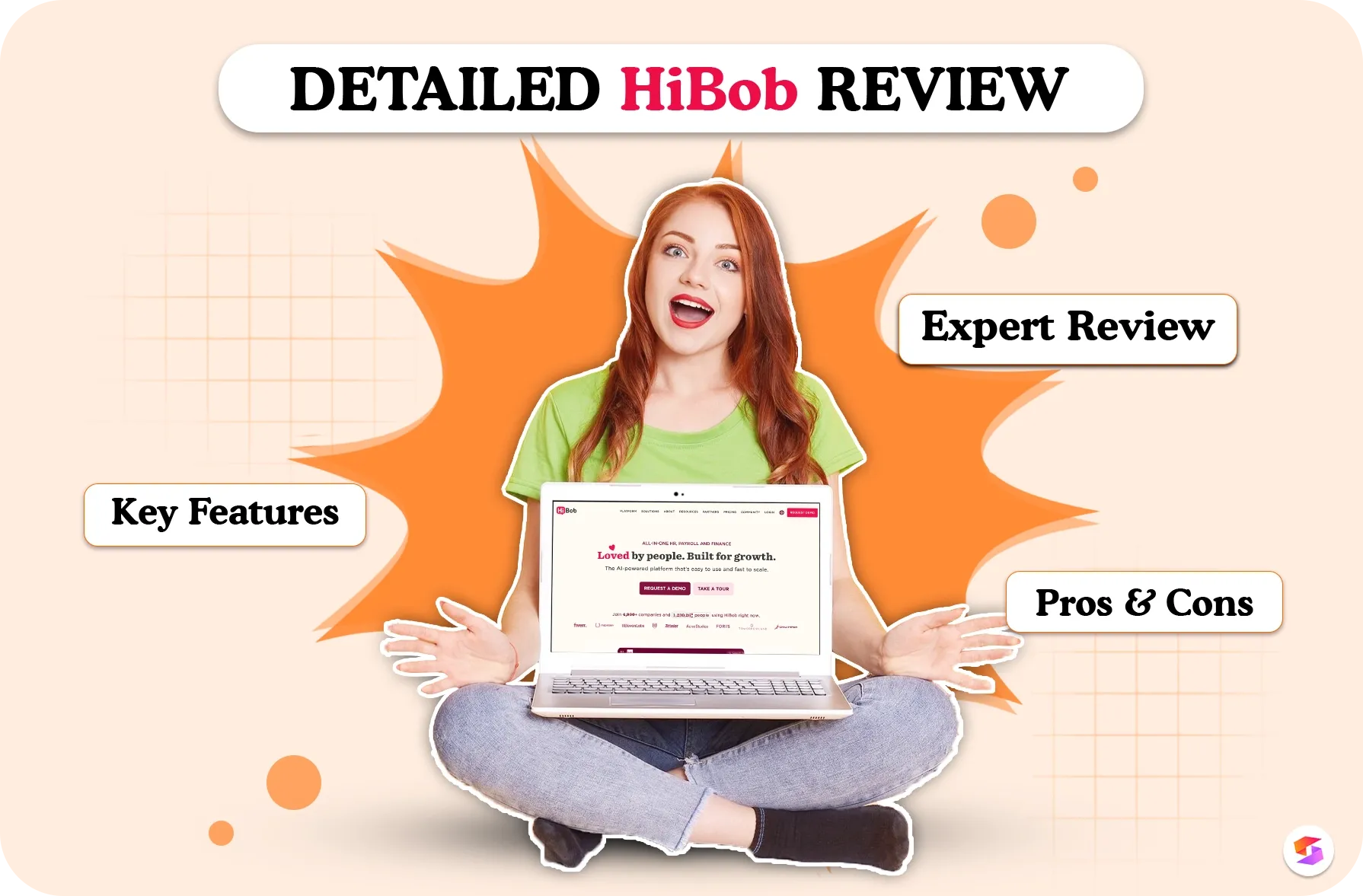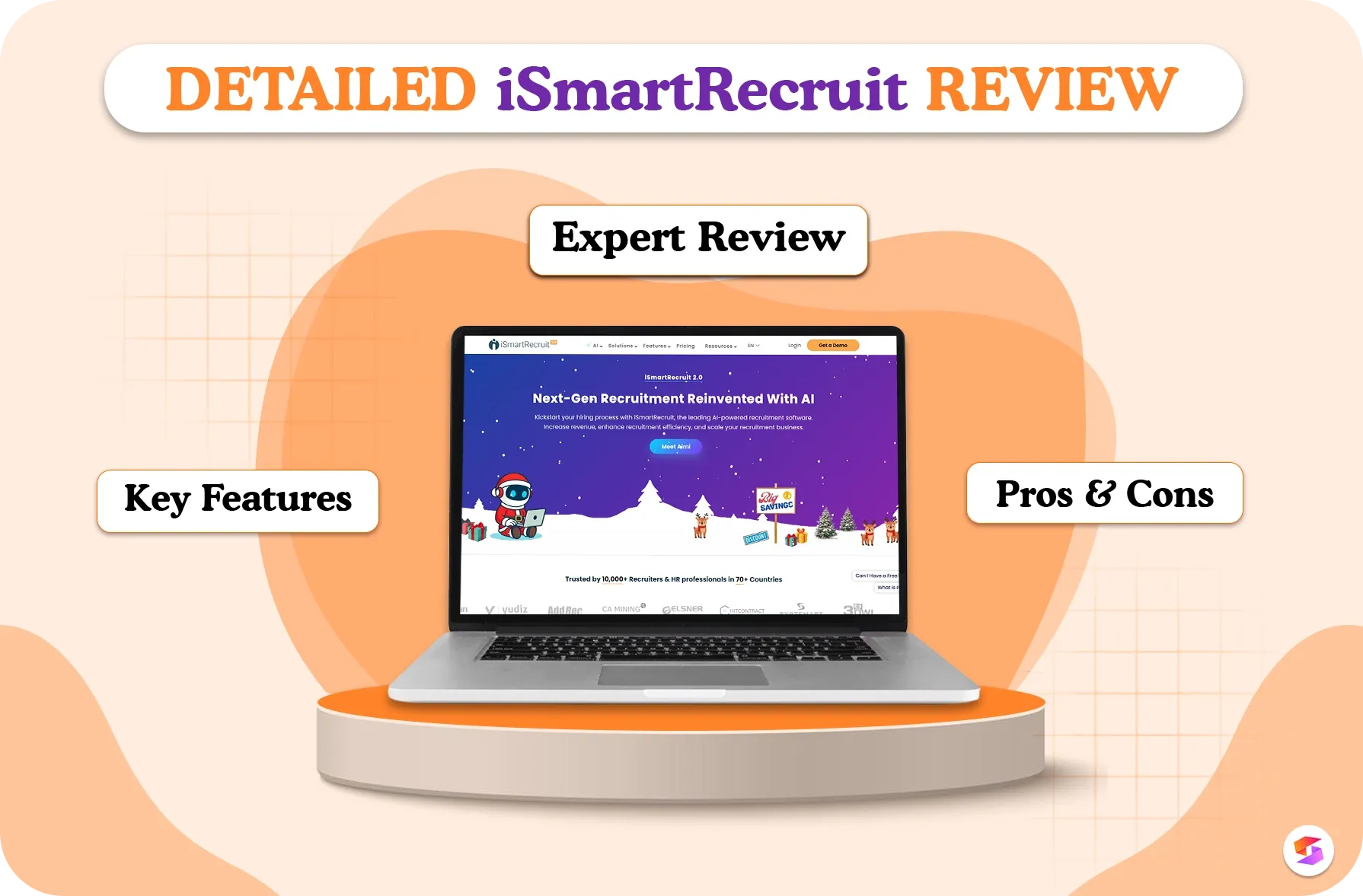Recent years have seen a shift in the recruiting process with diversity, equity & inclusion (DE&I) being embraced unconditionally. Recruiters are seeking to reduce any and all forms of bias in their recruiting process.
However, DE&I practices have also witnessed its fair share of criticism for failing to reduce several forms of bias, especially unconscious bias. Now, recruiters are turning to AI in recruiting to see if artificial intelligence can reduce unconscious bias. So, can it?
It’s clear that bias during the hiring process has persisted through time regardless of an organization's size and evidently impacted the workforce. Name, age, gender, race or a photo on the CV, there are multiple reasons a bias is triggered.
That being said, it’s not entirely the recruiters fault with many of the biases happening unconsciously. Thankfully, with the advent of recruiting tools, specifically, AI recruiting software, recruiters can make objective recruiting and hiring decisions more confidently. But how? Let’s see if AI in recruiting can reduce unconscious bias.
What Is an Unconscious Bias?
Unconscious bias refers to the inherent prejudices and stereotypes that influence decision-making without conscious awareness. When referring to diversity and inclusion, it impacts hiring practices, perpetuating inequalities within organizations. Conscious biases are more evident and recruiters are often aware when it happens. Whereas, fatigue or lack of time can be more obvious reasons for unconscious biases creeping into the recruiting process.
An example of unconscious bias would be emphasizing on 'culture fit' may inadvertently exclude individuals from diverse backgrounds. Such biases shape the working environment. It hinders efforts towards creating an inclusive culture. Recognizing and addressing unconscious bias is crucial for developing diversity and inclusion in workplaces.
Theoretically it seems fairly simple. Look at candidates objectively. But, practically it’s difficult to execute. One can argue that the human brain is not designed to handle large scale data. Plus, when a recruiter reads tens of job applications every day, at some level a bias will set in.

Reducing Different Types of Conscious & Unconscious Bias With Artificial Intelligence
There are several types of biases, some you might know, others completely unaware of. So, it’s necessary to learn about these biases and know how AI in recruiting can help reduce such conscious and unconscious biases.
Confirmation Bias
Confirmation bias, a prevalent form of bias in recruiting, occurs when hiring decisions are influenced by preconceived notions or stereotypes. For example - resumes with white-sounding names yield 9.65% callbacks, compared to 6.45% for black-sounding names, revealing disparities in callback rates based on name perception. This bias can lead to overlooking qualified candidates based on factors such as their name, race, or gender. However, artificial intelligence (AI) offers a solution to mitigate confirmation bias in recruiting processes.
AI algorithms can be programmed to evaluate candidates impartially, ignoring demographic information that may trigger bias. By analyzing objective data such as skills, experiences, and qualifications, AI ensures fair consideration for all applicants.
Additionally, AI recruiting tools employ machine learning and natural language processing to identify patterns in hiring decisions, detecting instances of bias for review. This proactive approach helps recruiters make more objective assessments. Recruits and hiring managers must also practice a standardized interviewing practice to eliminate such biases.
Implicit Bias
Implicit bias is a more evident form of unconscious bias. It encompasses the subconscious belief or attitude that humans have and affects our decision making process. Moreover, Disclosing race on resumes leads to a 50% decrease in interviews for minority applicants, highlighting biases in the hiring process. An example of implicit bias in the interview process could be when a hiring manager unconsciously favors candidates who share similar backgrounds or experiences. Artificial intelligence (AI) presents a promising solution to mitigate implicit bias in hiring practices.
By leveraging AI algorithms, recruiters can eliminate bias. AI can analyze candidate qualifications solely based on objective criteria, such as skills and experience. Further, recruiters can use AI resume screening tools to discover top candidates for a job role independent of their background or experiences. Moreover, AI-powered sentiment analysis can flag language that may indicate bias in job descriptions or communication with job seekers, enabling recruiters to adjust their approach accordingly.
Halo Effect
The halo effect bias, first used by psychologist Edward Thorndike in the 1920s, occurs when a positive impression of a candidate in one aspect influences perceptions of their abilities in other areas. For instance, a candidate with an impressive educational background may be automatically assumed to possess superior skills unrelated to their qualifications.
Artificial intelligence (AI) offers a solution to mitigate the halo effect bias in recruiting. Using AI, recruiters can design more objective evaluation processes. AI can analyze candidate performance based on specific criteria, eliminating the subjective influence of positive initial impressions.
The right AI recruiting tools can also compare candidate qualifications against job requirements without bias, ensuring that hiring decisions are based solely on merit. Furthermore, AI-powered screening processes can hide candidate information, such as educational background or previous employment, during the initial stages, preventing the halo effect from influencing evaluations.
Similarity Bias
Affinity or similarity bias commonly happens when recruiters find themselves more comfortable with one candidate than another. The bias is based on shared experiences, interests or background. For example - recruiter choosing a candidate because they have shared the same organization in the past.
By leveraging AI algorithms, recruiters can design more objective screening processes. AI tools can assess candidate qualifications and skills based on predefined criteria, independent of factors like educational background or past experiences.
Horns Effect
As opposed to the Halo effect where a candidate's independent positive merit creates a positive impression, Horns effect imply developing a negative impression of an applicant based on a single negative experience. For instance, if a candidate has a less prestigious educational background, they may be unfairly judged as lacking competence in other areas.
AI can anonymize candidate information during initial screening, ensuring decisions are merit-based. Additionally, AI compares candidates against job requirements without prejudice, preventing negative initial impressions from influencing evaluations. It’s also important for recruiters to go back and reevaluate their first impressions before making a judgment.
Gender Bias
One of the most common biases, gender bias, is simply favoring one gender over the other. Now, with the debate of multiple genders in the mix, it has become more important than ever to have a gender neutral approach. Considering gender is the first step to developing an inclusive workforce. In fact, bias in STEM hiring makes women 45% more likely to be excluded. For example - if a recruiter presumes that a female candidate may not be able to accomplish the said job role hence rejecting them from the applicant pool is a form of gender bias.
AI tools can eliminate such biases by not disclosing the gender. ATS systems also have the option to not reveal gender during the initial application process. A simple yet necessary step to minimize any form of unconscious bias.
Affect Heuristic
This is a form of bias where our mind takes mental shortcuts, primarily driven by emotions, to make decisions. The process boosts decision making, specifically when time is of the essence. For example - during the interview, a candidate made a comment that the hiring manager did not align with and decided to reject the candidate solely on the comment, irrespective of their high relevance to the job role.
A conscious oversight of the recruiter's own emotions is paramount. Recruiter must be able to hold their emotions and not let it overshadow their decision making. Reflecting on oneself before making a decision is also important.

Artificial Intelligence Solely Is Not the Solution
There are several aspects of the recruiting process that AI recruiting tools and techniques can help in reducing the hiring bias. However, a bias can happen at any stage of the hiring process. So, a mix of conscious decision making practices and the right AI software perfect for a drastically diminished hiring bias.
Since AI is growing and constantly learning, it cannot always be perfectly accurate, all the time. Recruiting AI software needs constant checks to assure a pattern of bias does not grow.
Also Read: How to Ensure a Positive Candidate Experience: Best Practices
Why Is Unconscious Bias Difficult to Reduce?
Yes, unconscious bias is challenging to reduce. Such biases are deeply ingrained in our psychology and conscious effort to sometimes even identify them, let alone eliminate them.
To start with, it operates on a subconscious level, making individuals unaware of their biased behaviors and perceptions. Truthfully, these biases often grow from societal norms, cultural upbringing, and personal experiences, making them deeply rooted and difficult to recognize. Secondly, unconscious bias operates involuntarily, affecting decision-making processes without deliberate intent. Even individuals committed to fairness may unknowingly exhibit bias.
Additionally, unconscious biases can reinforce over time through repeated exposure and societal reinforcement, further entrenching them in one's thought patterns. Furthermore, addressing unconscious bias requires self-awareness, education, and continuous effort, which can be challenging for individuals and organizations alike. Despite efforts to mitigate bias, it can persist within a company due to its complex nature.
Thus, automation is by far the only, viable solution to assuring that just like human error, bias is also reduced. Artificial intelligence is smarter and more capable at dealing with human biases. However, a constant vigilance is necessary to make sure the AI recruiting tools don't develop new biases or adapt to the existing ones.
How does Skima reduce bias in hiring?
Skima is an AI recruitment software that assists recruiters with faster and smarter resume assessment and candidate matching. Simply add your candidate database on Skima and get a list of top candidates based on the job role.
Skima compares individual candidates against hundreds of data points to find the best fit applicants for a job role. Rather than a subjective analysis of age, gender, name or independent experiences or education, our trained algorithm assess candidates on comprehensive parameters including skills and behavioral aptitude for a particular job.
Also, check if you are practicing blind hiring correctly. Find if AI will take your recruitment job.



